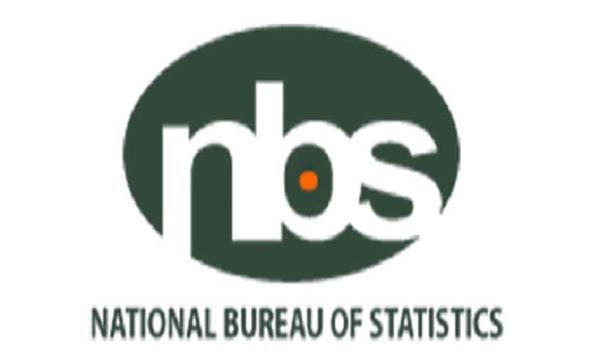Inflation Rate Moderates in August 2024 to 32.15 %
…Food Inflation Remains a Concern
By Patience Ikpeme
The National Bureau of Statistics (NBS) reported a modest easing of Nigeria’s headline inflation for August 2024, recording a rate of 32.15%, down from the 33.40% reported in July 2024.
This marks a 1.25 percentage point reduction in the inflation rate, offering some relief after months of persistent price pressures.
However, the annual inflation comparison reveals a different picture. On a year-on-year basis, the August 2024 inflation rate of 32.15% is 6.35 percentage points higher than the 25.80% rate recorded in August 2023.
This significant year-on-year rise reflects the continuing impact of structural issues in the Nigerian economy, including supply chain disruptions, foreign exchange volatility, and energy price hikes.
On a month-to-month basis, the inflation rate for August 2024 stood at 2.22%, slightly lower than the 2.28% recorded in July 2024. This 0.06 percentage point decrease indicates that while prices continue to rise, the rate of increase has slowed somewhat compared to the previous month.
Despite the moderation in headline inflation, food inflation continues to exert pressure on households across the country. In August 2024, food inflation was recorded at 37.52% on a year-on-year basis, representing an 8.18 percentage point increase from the 29.34% rate in August 2023. The persistent rise in food prices is largely attributed to increases in the cost of staple items such as bread, maize grains, yam, potatoes, and cassava. The surge in prices of palm oil, vegetables, and beverages like Ovaltine and Milo also contributed to the food inflation spike.

According to the NBS, the main drivers of food inflation in August 2024 included the rising costs in several key food categories: Bread and cereals: Significant increases in the prices of bread, maize grains, and guinea corn. Tubers: The cost of yam, Irish potatoes, and water yam saw marked increases. Oils and fats: Palm oil and vegetable oil prices remained elevated. Beverages: Popular items such as Ovaltine, Milo, and Lipton tea experienced price hikes.
On a month-to-month basis, food inflation in August 2024 was 2.37%, a slight decrease from the 2.47% recorded in July. This 0.10 percentage point drop is attributed to a slower rate of price increases for items such as tea, coffee, groundnut oil, milk, and tubers like yam and potatoes. Despite this marginal decrease, food prices remain high, compounding the challenges faced by many Nigerians, especially those in low-income households.
The average annual food inflation rate for the 12 months ending in August 2024 was 36.99%, a significant 11.98 percentage point increase from the 25.01% recorded for the same period in 2023. This reflects a troubling trend of rising food costs over an extended period.

The NBS report also highlighted the variations in inflation across Nigeria’s 36 states and the Federal Capital Territory (FCT). On a year-on-year basis, Bauchi State recorded the highest inflation rate at 46.46%, followed by Kebbi (37.51%) and Jigawa (37.43%). These states, predominantly located in northern Nigeria, have faced heightened inflationary pressures due to factors such as insecurity, which has disrupted agricultural production and supply chains.
On the other hand, Benue (25.13%), Delta (26.86%), and Imo (28.05%) reported the slowest year-on-year increases in headline inflation. These states, primarily in the southern region, have benefited from relatively better access to agricultural produce and less severe disruptions in supply.
Month-on-month, the highest increases in inflation were recorded in Kwara (4.45%), Bauchi (4.22%), and Adamawa (3.99%), while states like Ogun (0.21%), Abuja (0.92%), and Kogi (1.14%) saw the slowest rises in month-on-month inflation.
Food inflation also showed significant disparities across the country. On a year-on-year basis, Sokoto State recorded the highest food inflation rate at 46.98%, followed closely by Gombe (43.25%) and Yobe (43.21%). These northern states, affected by insecurity and disruptions to agricultural activities, have witnessed sharp spikes in food prices.
Meanwhile, states like Benue (32.33%), Rivers (33.01%), and Bayelsa (33.36%) saw the slowest year-on-year increases in food inflation, reflecting more stable food supply and production in these areas.
On a month-to-month basis, Adamawa (5.46%), Kebbi (4.48%), and Borno (3.88%) recorded the highest increases in food prices, while Ogun (0.08%), Akwa-Ibom (0.45%), and Sokoto (1.00%) experienced the smallest monthly increases in food inflation.
While the easing of the headline inflation rate in August 2024 is a welcome development, the persistent rise in food prices remains a significant concern for Nigeria’s economy. With inflationary pressures continuing to affect different parts of the country unevenly, addressing the root causes of these price increases—such as insecurity, supply chain disruptions, and currency instability—will be crucial for stabilizing prices and improving the economic well-being of Nigerians.
The latest inflation figures also highlight the urgent need for the government and policymakers to implement targeted interventions, particularly in the agricultural sector, to mitigate the rising cost of food and ensure greater price stability across the country.





